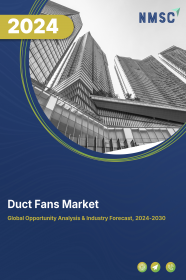
Australia Construction Market by Type (Renovation and New Construction), and by Sector (Real Estate, Infrastructure, and Industrial)–Opportunity Analysis and Industry Forecast, 2024–2030
Industry: Construction & Manufacturing | Publish Date: 20-May-2025 | No of Pages: 73 | No. of Tables: 108 | No. of Figures: 53 | Format: PDF | Report Code : CM2220
US Tariff Impact on Australia Construction Market
Trump Tariffs Are Reshaping Global Business
Australia Construction Market Overview
The Australia Construction Market size was valued at USD 286.62 billion in 2023, and is predicted to reach USD 523.88 billion by 2030, at a CAGR of 8.4% from 2024 to 2030.
The construction market, also referred to as infrastructure, holds a pivotal position in the economy, overseeing the entire lifespan of various physical structures, including infrastructure, buildings, and facilities. This industry encompasses a wide array of projects, ranging from residential, commercial, and industrial developments to civil engineering and institutional infrastructure ventures.
Collaboration among various stakeholders, such as architects, engineers, contractors, suppliers, developers, investors, and government agencies, is essential for its operations. Positioned for growth, the industry is propelled by an increased emphasis on environmentally sustainable practices, such as integrating green building materials and energy-efficient designs. Moreover, factors such as the rising per capita income in emerging economies and low-interest rates in developed nations are anticipated to further stimulate the expansion of the infrastructure market.
Megaproject Development in the Country Drives the Infrastructure Market Growth
The infrastructure sector in this country is witnessing significant expansion, primarily fueled by the surge in large megaproject development. Notable projects such as the Western Sydney Infrastructure Plan, Bruce Highway Upgrade Program, METRONET, West Gate Tunnel, Melbourne Metro Tunnel, Adelaide’s North-South Corridor, and Sydney Metro in 2023 underscore the robust growth of the construction market.
These substantial endeavours play a pivotal role in driving the infrastructure industry's expansion, highlighting its vital contribution to the country's infrastructure development.
Rising Investments Fueling Infrastructure Market Growth
The infrastructure market in Australia is experiencing substantial growth due to increased investments in infrastructure-related activities. According to data from the Global Infrastructure Hub, investments in the infrastructure sector soared to USD 56 billion in 2023, with the road transport sector emerging as the largest contributor with USD 16 billion.
Following closely, the energy sector received USD 15 billion in investments. This upward investment trend is projected to continue, further propelling the growth and advancement of the construction market in the country.
Regulatory Complexities in the Construction Market Barriers the Market Growth
Navigating through regulatory complexities presents a formidable challenge in the construction market. Infrastructure projects often face hurdles due to the intricate network of government regulations and permitting procedures. Infrastructure initiatives require obtaining numerous permits and approvals from governmental bodies at local, regional, and national levels.
These mandates entail adherence to zoning regulations, environmental assessments, compliance with building codes, safety standards, and various regulatory requirements. Lengthy permit acquisition processes, bureaucratic inefficiencies, and regulatory disparities among different jurisdictions can significantly extend project timelines and inflate costs. Moreover, fluctuations in regulations or unexpected policy changes can disrupt ongoing projects and deter potential investments.
Integration of Digitalization and BIM Presents Lucrative Opportunity for Market Expansion
The construction industry is undergoing a significant transformation through the integration of digitalization and the adoption of Building Information Modeling (BIM). Advanced technologies such as BIM are enhancing efficiency, accuracy, and collaboration across diverse projects. BIM, a sophisticated 3D modeling tool, empowers stakeholders to generate and manage digital representations of structures and infrastructure, facilitating improved coordination and communication among project teams.
For instance, in September 2022, the National Institute of Building Sciences (NIBS) launched the Australia National Building Information Management (BIM) Program. This initiative aims to revolutionize the infrastructure sector, achieving unprecedented levels of industrial efficiency through digitalization. By addressing the inadequacy of digitalization within the Australia infrastructure sector, the program seeks to streamline lifecycle work processes, enhancing efficiency, cost-effectiveness, resilience, and safety for infrastructure and maintenance projects.
Competitive Landscape
The market players operating in the Australia infrastructure industry include Worley, Lendlease Group, CIMIC Group Limited, John Holland Group, Hutchinson Builders, Downer Group, Laing O'Rourke Australia, Probuild, Buckeridge Group of Companies, Fulton Hogan, Acciona, BMD Company, Multiplex, Mirvac, Hansen Yuncken, and others.
Australia Construction Market Key Segments
By Type
-
Renovation
-
New Construction
By Sector
-
Real Estate
-
Residential
-
Affordable
-
Luxury
-
-
Commercial
-
Retail Buildings
-
Office Buildings
-
Hospitality
-
Healthcare Facilities
-
Educational Institutes
-
Entertainment Ventures
-
-
-
Infrastructure
-
Transportation
-
Airport
-
Port
-
Rail
-
Road
-
-
Water and Wastewater
-
Energy
-
Telecommunication
-
-
Industrial
-
Manufacturing Plant
-
Warehouses
-
Power Plants
-
Oil Refineries
-
Chemical Plants
-
Key Players
-
Worley
-
Lendlease Group
-
CIMIC Group Limited
-
John Holland Group
-
Hutchinson Builders
-
Downer Group
-
Laing O'Rourke Australia
-
Probuild
-
Buckeridge Group of Companies
-
Fulton Hogan
-
Acciona
-
BMD Company
-
Multiplex
-
Mirvac
-
Hansen Yuncken
REPORT SCOPE AND SEGMENTATION:
|
Parameters |
Details |
|
Market Size in 2023 |
USD 286.62 Billion |
|
Revenue Forecast in 2030 |
USD 523.88 Billion |
|
Growth Rate |
CAGR of 8.4% from 2024 to 2030 |
|
Analysis Period |
2023–2030 |
|
Base Year Considered |
2023 |
|
Forecast Period |
2024–2030 |
|
Market Size Estimation |
Billion (USD) |
|
Growth Factors |
|
|
Companies Profiled |
15 |
|
Market Share |
Available for 10 companies |
|
Customization Scope |
Free customization (equivalent up to 80 working hours of analysts) after purchase. Addition or alteration to country, regional, and segment scope. |
|
Pricing and Purchase Options |
Avail customized purchase options to meet your exact research needs. |

















 Speak to Our Analyst
Speak to Our Analyst

















